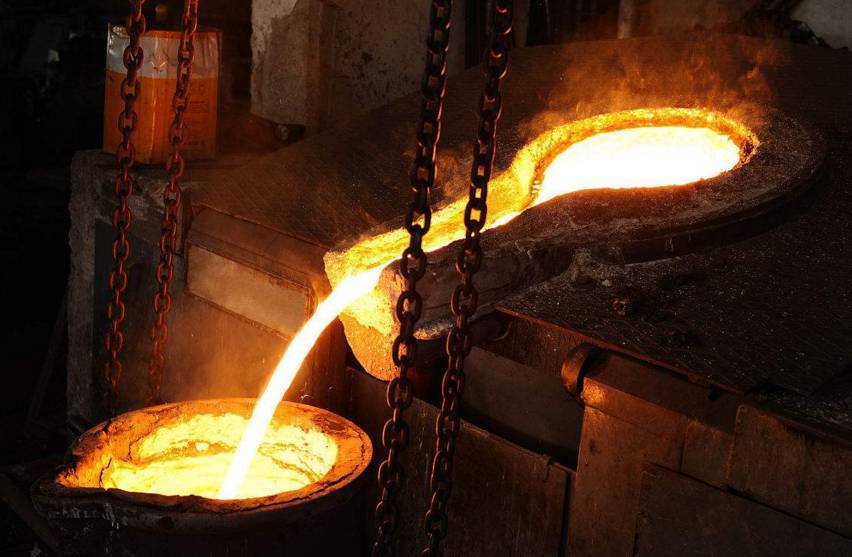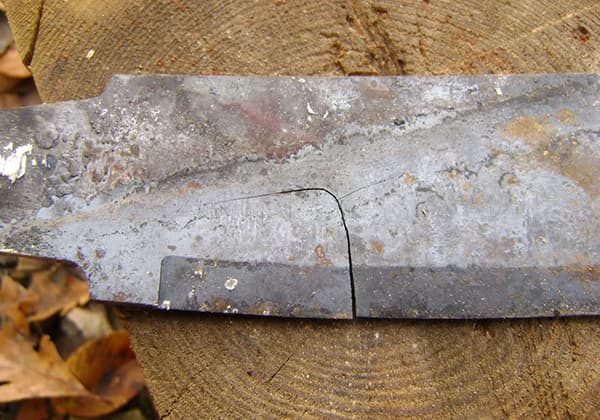What is the melting point of metal?
What is the highest and lowest melting point of metal?
A significant issue to be aware of when processing metal materials are the melting point.
First, let’s take a look at what is the melting point.
The melting point of a substance is the temperature at which the solid and liquid phases of the pure substance are balanced under a certain pressure.
That is, at the pressure and the melting point temperature, the chemical potential of the pure substance is equal to the chemical potential of the liquid.
For the pure material solid system (nanosystem) with great dispersion, the surface part cannot be ignored, and its chemical potential is not only a function of temperature and pressure but also related to the particle size of the solid particles, which belongs to the thermodynamic first-order phase transition process.

Simply put, only a certain melting point can change the shape of the metal, thus forging different products.
Therefore, we should first understand the melting point of various metals before processing.
Let’s dive in the melting point of various ferrous metals and nonferrous metals.
| No. | Metal | Melting Point (℃) | Remark | |
|---|---|---|---|---|
| Ferrous Metal | 1 | Iron | 1535 | The melting point of steel is 1400—1500℃ and 1200℃ for pig iron. |
| 2 | Chromium | 1890 | Pure Metal | |
| 3 | Manganese | 1244 | Pure Metal | |
| Nonferrous Metal | 1 | Aluminum | 660 | Pure Metal |
| 2 | Magnesium | 651 | Pure Metal | |
| 3 | Potassium | 63 | Pure Metal | |
| 4 | Sodium | 98 | Pure Metal | |
| 5 | Calcium | 815 | Pure Metal | |
| 6 | Strontium | 769 | Pure Metal | |
| 7 | Barium | 1285 | Pure Metal | |
| 8 | Copper | 1083 | Pure Metal | |
| 9 | Lead | 328 | Pure Metal | |
| 10 | Zinc | 419 | Pure Metal | |
| 11 | Tin | 232 | Pure Metal | |
| 12 | Cobalt | 1495 | Pure Metal | |
| 13 | Nickel | 1453 | Pure Metal | |
| 14 | Antimony | 630 | Pure Metal | |
| 15 | Mercury | -39 | Pure Metal | |
| 16 | Cadmium | 321 | Pure Metal | |
| 17 | Bismuth | 271 | Pure Metal | |
| 18 | Gold | 1062 | Pure Metal | |
| 19 | Silver | 961 | Pure Metal | |
| 20 | Platinum | 1774 | Pure Metal | |
| 21 | Ruthenium | 231 | Pure Metal | |
| 22 | Palladium | 1555 | Pure Metal | |
| 23 | Osmium | 3054 | Pure Metal | |
| 24 | Iridium | 2454 | Pure Metal | |
| 25 | Beryllium | 1284 | Pure Metal | |
| 26 | Lithium | 180 | Pure Metal | |
| 27 | Rubidium | 39 | Pure Metal | |
| 28 | Cesium | 29 | Pure Metal | |
| 29 | Titanium | 1675 | Pure Metal | |
| 30 | Zirconium | 1852 | Pure Metal | |
| 31 | Hafnium | 2230 | Pure Metal | |
| 32 | Vanadium | 1890 | Pure Metal | |
| 33 | Niobium | 2468 | Pure Metal | |
| 34 | Tantalum | 2996 | Pure Metal | |
| 35 | Tungsten | 3410 | Pure Metal | |
| 36 | Molybdenum | 2617 | Pure Metal | |
| 37 | Gallium | 30 | Pure Metal | |
| 38 | Indium | 157 | Pure Metal | |
| 39 | Thallium | 304 | Pure Metal | |
| 40 | Germanium | 937 | Pure Metal | |
| 41 | Rhenium | 3180 | Pure Metal | |
| 42 | Lanthanum | 921 | Pure Metal | |
| 43 | Cerium | 799 | Pure Metal | |
| 44 | Praseodymium | 931 | Pure Metal | |
| 45 | Neodymium | 1021 | Pure Metal | |
| 46 | Samarium | 1072 | Pure Metal | |
| 47 | Europium | 822 | Pure Metal | |
| 48 | Gadolinium | 1313 | Pure Metal | |
| 49 | Terbium | 1356 | Pure Metal | |
| 50 | Dysprosium | 1412 | Pure Metal | |
| 51 | Holmium | 1474 | Pure Metal | |
| 52 | Erbium | 1529 | Pure Metal | |
| 53 | Thulium | 1545 | Pure Metal | |
| 54 | Ytterbium | 819 | Pure Metal | |
| 55 | Lutecium | 1633 | Pure Metal | |
| 56 | Scandium | 1541 | Pure Metal | |
| 57 | Yttrium | 1522 | Pure Metal | |
| 58 | Thorium | 1750 | Pure Metal |
In the Periodic Table of Elements, there’re two nonmetal materials which are Silicon and Boron, and their melting point of them are 1420°C and 2300°C respectively.
What is the highest and lowest melting point?
From the table, we have been able to understand the melting point of various metals clearly.
For the metal with the highest and lowest melting point, I’ll also give you a brief introduction.
There is a kind of metal called Caesium, which is silvery white.
It was founded in 1860.
Except for mercury, it has the lowest melting point of 29 °C.
Among all pure metals, tungsten has the highest melting point.
In 1783, two Spanish people discovered that the melting point of tungsten was 3417 ± 10 °C.
The most resistant to high temperatures are niobium carbides (TG 0.88) and niobium carbides (HfG 0.95).
The melting points of the two materials were 4010±75 °C and 3960±20 °C respectively.


